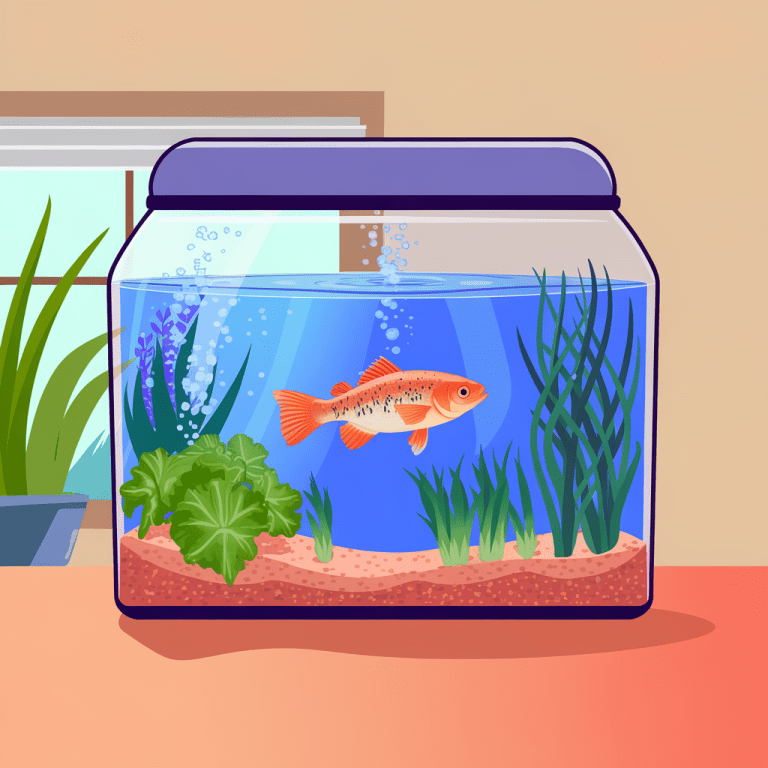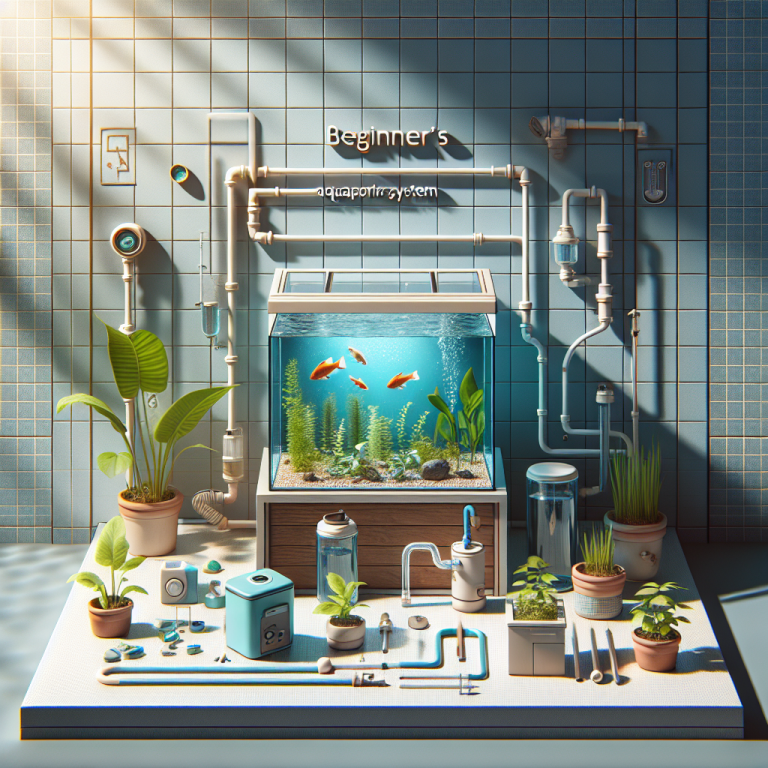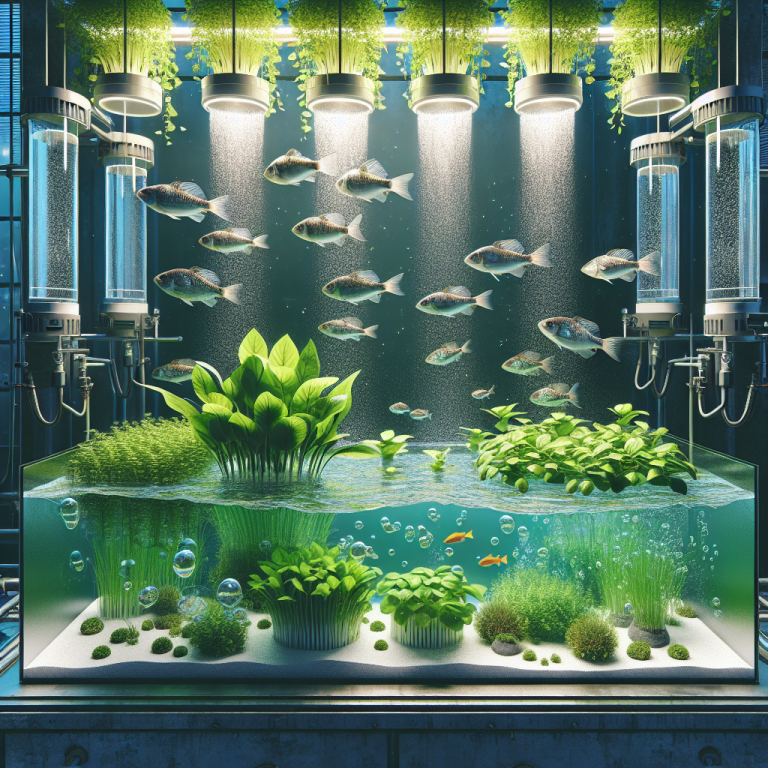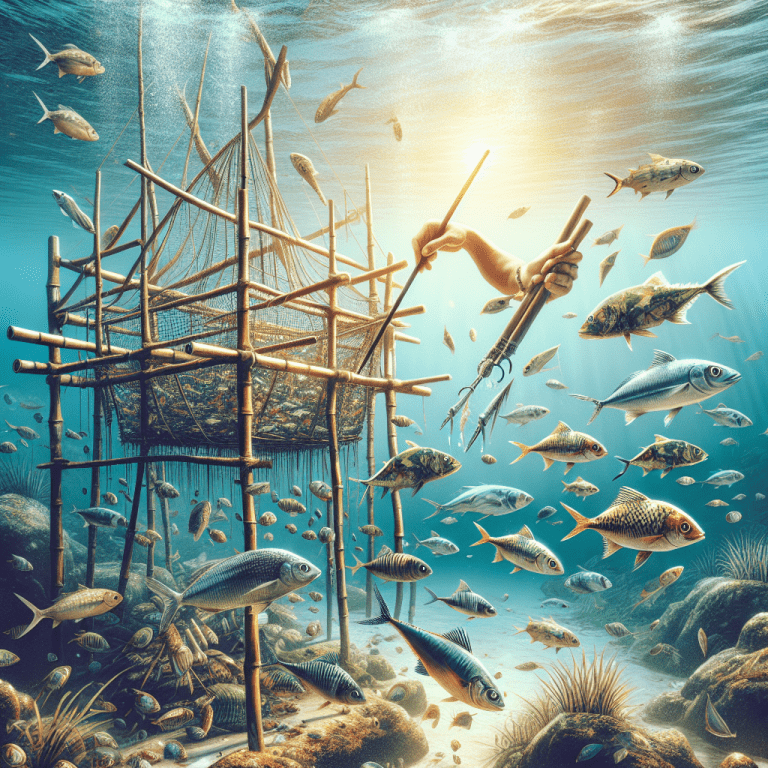Ever felt overwhelmed delving into a new domain as mesmerizing as small scale aquaponics? Well, hats off to your brave curiosity, first of all. And secondly, listen up. You're not alone. Many bright-eyed beginners share the same worries. Dwelling on uncertainties about the managerial end or the nitty-gritty of putting a system together? Keep calm! This guide comes largely prepared to untangle the confusion for aquaponics explorers like you. Let’s call it the 'Select-Set-Sustain' model of small scale aquaponics. Can't get simpler, right? Consider this guide your step-by-step navigation towards a thriving small scale aquaponics setup – from maneuvering through picking the right system, making it up and running, introducing your little fishy friends and leafy pals, to the awaited stage of vigilant maintenance. Worried about the bumps on the road? We'll cover the common issues and equally common bliss of troubleshooting, helping you build resilience in your mini aquaponics expedition. Just like with innovation and creativity, there are no wrong answers, only ingenious solutions waiting to unfold. Get ready to unlock potential pleasures of tending a modest aquaponics system. The harmony of fish, water, and plants…in just the right proportions. Now doesn't that evoke a sense of wellness? Let's dive right in then, shall we?
Understanding Small Scale Aquaponics
Understanding how small scale aquaponics work won't take much of your time, especially if you are quite fond of scientific explorations and love to immerse yourself in innovative DIY projects. So, let's dive in; deep but easy. Aquaponics is a merged science. Think of it as you would a duplex: it combines traditional aquaculture (raising aquatic animals such as fish) and hydroponics (cultivating plants in water) into one compact system. Small scale aquaponics simply shrinks it all down to something you can manage at home. Imagine waking up for your morning stretch, cup of fresh lemon water in hand. You take a stroll over to your little aquaponics system. At the base, fishes are splendidly swimming, their waste providing natural nutrients (i.e., fish poop)—a veritable all-day buffet for your plants afloat on top! After a good chomp, your plants cleanse the water that trickles back to the fish. That's how the beautiful, symbiotic circle of small scale aquaponics moves. Humor aside, this cycle is an easy, innovative solution for space-starved city dwellers eyeing indoor gardening. As well, this is a fact: it uses roughly 90% less water than conventional gardening methods. With small scale aquaponics, not only do you maximize space efficacies—you also play a significant part in sustainable living. Bet your lemon water tastes even better now. By familiarizing yourself with this system, together, we can embrace innovation in pursuit of health and well-being.
Choosing the Right System Setup
Moving forward in our journey, let's drill down to the essentials of selecting the suitable small-scale aquaponics system setup. The first choice you'll have to make lies between the media-filled bed and nutrient film technique. Visualize the media-filled bed technique as small-scale aquaponics made easy—it's akin to swapping the soil in your garden with pebbles. This system requires low maintenance as your crops are planted directly into the gravel. This system serves two functions – firstly, crops gather nutrients from the water filtered through the media beds, and secondly, this media bed acts as a biological filter, vital in maintaining equilibrium in your aquaponics ecosystem. On the other hand, the nutrient film technique employs no media and showers your plants' roots with nutrient-filled water. Picture having a constant flow of liquid nutrition right at your crops' fingertips—it's like a never-ending buffet designed for your plants! You're probably wondering which one to choose, right? Well, the novice who values simplicity would likely gravitate toward the media-filled bed setup. However, if you aren't afraid of a little complexity and want maximized crop yield, the nutrient film technique is worth considering. The decision ultimately boils down to aligning with your personal comfort level and expectations. Remember, no matter your choice, small-scale aquaponics can be an exciting exploration of innovation and creativity. In the following section, we'll guide you into actual cumbers-free systems assembly. You've got this!
Setting Up Your Aquaponics System
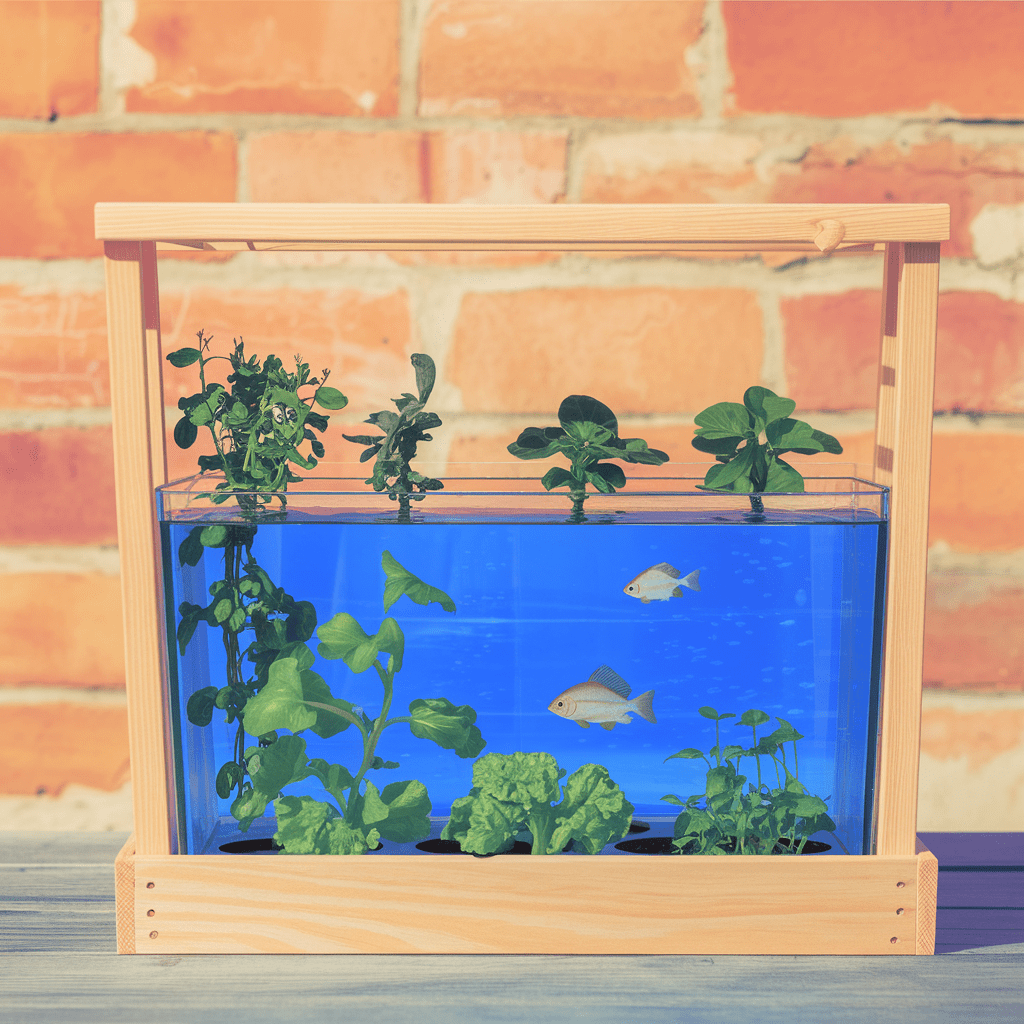
Establishing your very own small scale aquaponics system need not be daunting! Kick off your journey by picking the right space. It can be your backyard, balcony, or even the garage. Ensure sufficient light – an essential component for plant growth. Your spot should also provide optimal temperature conditions for the aquatic life. Next, decide on the types of fish and plants you wish to grow. Bear in mind the complexity of your setup. For instance, leafy greens and tilapia are ideal if you are starting. This combo is not only popular but also relatively low maintenance. Isn't simplicity appealing? Now, time to collect your materials. Your local garden store or online platforms can be a good point of call. Aquaponics kits are also available for novices wanting an easy route. They include components like fish tanks, grow beds, and pumps. Diving in your adventure headfirst? Now, let’s move to the construction phase. Hook up the fish tank and grow bed. Your pump will propel nutrient-rich water from the fish tank to your plants. Channel your inner builder while making sure this system functions seamlessly. Seeing this venture through to fruition may seem intimidating. But isn't taking baby steps toward self-sustainability rewarding? Small scale aquaponics can be your vibrant leap towards a healthier well-being. So, brace yourself and plunge into this exciting endeavor!
Introducing Fish and Plants
Expanding on previous discussions about the essentials of a small scale aquaponics system, nurturing both plants and fish in harmony is crucial. Remember, with small scale aquaponics, you're building a balanced ecosystem in your own home. Choosing the right kind of fish could make your aquaponic’s transition smoother. Goldfish are excellent starter fish since they are tough, resilient, and can survive in diverse water conditions. If you’re more experienced, you can try tilapia. They are similar to goldfish except that they are edible! Now think about plants. Leafy greens thrive in aquaponics systems. That's because they require less nutrient input than fruit-bearing plants. You could start with lettuce, kale or basil. Here's a hot tip. Introduce the fish into the tank first and let them settle for a week. This not only eases the fish into their new environment, but it also enables the system to accumulate a good amount of fish waste. It helps kick-start the growth of beneficial bacteria. Once you’ve done that, go ahead and add a few plants to your system. They’ll work their magic, absorbing the waste and cleaning the water for your fish to thrive. This joint introduction of fish and plants simplifies small scale aquaponics for beginners like you. Trust this process, and before long, you’ll cultivate health right in your own home.
Monitoring and Maintaining Your System
Transitioning from setting up your small-scale aquaponics system, we'll now shift where your conversations with your plants and fish develop. Knowing what's typical for your tank's cycle gives you control. And control, my friend, allows you to reap the benefits of your system in no time! Make a weekly routine of checking your aquaponic system. You'll become familiar with the workings of your indoor garden. For instance, observe the color of the water. Is it amber-ish? Great! It means your fish are happy, releasing ammonia. That kicks off the nutrient cycle for your greens! Test the water for pH, ammonia, nitrate, and nitrite levels. Picture yourself as a detective solving the mystery of a healthy aquaponics system. If you notice spikes, it could be a sign your fish are overfed or that there are too many for your system. Adjust as necessary, acting upon your findings promotes balance – the sweet spot in small-scale aquaponics. Another crucial task, clean your system regularly. Maintain your pipes clean for good flow. Remember Luke Skywalker jetting through the Death Star trenches? That’s how you want your water flowing. Monitoring and maintaining your system is a rewarding process. It empowers you to grow healthy and fresh food. It bolsters your commitment to innovation, creativity, and wellness. Embrace it!
Troubleshooting Common Issues
Getting deep into small scale aquaponics, its key challenges are bound to arise. Remember the time you got your first plant? Frustrations bubbled up when it wilted, right? Other challenges are also bound to pop up in your aquaponics journey, and that’s okay. Let's delve into how we can troubleshoot them. Blocked pipes are a common speed bump. Water forms the lifeblood of your setup. So, when pipes clock, it can be daunting. But fear not! This can usually be fixed by cleaning them thoroughly. You do want your tiny water universe to flow smoothly, don't you? Another issue is maintaining the pH balance. Fish do well in alkaline, while plants prefer slightly acidic surroundings. So, it might feel like baking a cake on Mt. Everest, but it's possible! Regularly test your water and adjust accordingly. It's your mini-environment to control – Innovate, create and master this balance. Plants looking weary? Could be nutrient deficiency. This is your cue to assess the fish feed. It indirectly impacts your plant health. Just think of your system as one big super-connected family. And finally, let's talk about pests. While you’re trying your green thumb with aquaponics, nasty pests could start a small coup. Use organic pesticides, deal with them gently and smartly. After all, you want your corner of green to roar 'health and wellness', not 'pest party'! Remember, troubleshooting takes time. You're gradually becoming an expert in small scale aquaponics, learning and growing, much like your plants.
Conclusion
Wow, you've come a long way, haven’t you? It's remarkable to reflect on the journey you've embarked on. From the simple concept of small-scale aquaponics to fully understanding the ins and outs, you’ve grown! We kicked things off with understanding what small-scale aquaponics is. You’ve then looked into choosing the best system for your needs. Setting up your aquaponics system, planting, and introducing your fish came next. We showed you how to effectively monitor and maintain it. And we did some good old troubleshooting together. You're now equipped with knowledge. Those sneak-peek challenges you were worried about earlier? Well now, they don’t stand a chance against your new-found aquaponics wisdom! You see, aquaponics may seem daunting at first. Multiple factors to consider, decisions to make. But it’s not too complicated once you break it down. In fact, it's fascinating how simple and natural the whole system works. Let those calming water sounds lead your way to a healthier wellness journey. The tangible experience of seeing your own fish and plants thrive – well, there's nothing quite like it. All you need now is that leap of faith. Leap into this world of creativity and innovation. Unleash your inner green thumb, fish enthusiast, and health advocate all at once. This journey of starting a small-scale aquaponics system is yours to venture on. And remember, no step is too small as long as you are moving forward. So, why wait? Dive headfirst into this rewarding pursuit today! Embrace small-scale aquaponics as part of your wellness journey. Let's add a unique, creative, and innovative twist to your lifestyle. Trust yourself, and start your aquaponics journey today!
